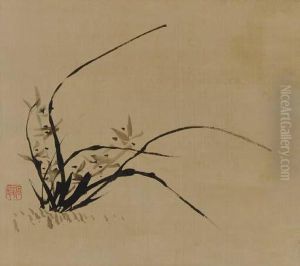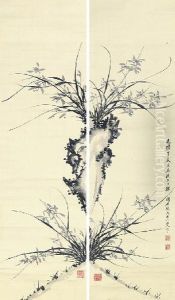Yi Haung Paintings
Yi Haung, also known by his courtesy name Yunbing, was a prominent figure in the world of Chinese art, particularly celebrated for his achievements in painting during the Qing dynasty. Born in 1744 into a time of significant cultural flourish, Yi Haung's works are often regarded as embodying the sophisticated aesthetic sensibilities and the scholarly ideals of his era. His life and art were deeply influenced by the rich traditions of Chinese literati painting, a genre that emphasized personal expression, scholarly learning, and a deep engagement with nature.
Yi Haung's artistic journey is marked by his adept skills in both ink painting and calligraphy, showcasing the dual mastery that was highly esteemed in his cultural context. His landscapes and floral compositions are especially noted for their refined elegance, subtle use of color, and the harmonious interplay between void and substance, which capture the philosophical and aesthetic principles of Daoism and Confucianism. These works not only reflect Yi Haung's profound understanding of the natural world but also his intellectual pursuits and the scholarly ethos of the literati class to which he belonged.
Throughout his lifetime, Yi Haung navigated the complexities of Qing dynasty society, a period characterized by both cultural prosperity and socio-political challenges. His art offers insights into the life of the Chinese intelligentsia during this time—balancing between the adherence to traditional values and the exploration of personal artistic expression. Yi Haung passed away in 1807, leaving behind a legacy that continues to influence Chinese art. His works are celebrated for their contribution to the literati painting tradition, and they remain an important subject of study for art historians and collectors alike, embodying the enduring spirit of Chinese cultural and artistic ideals.

